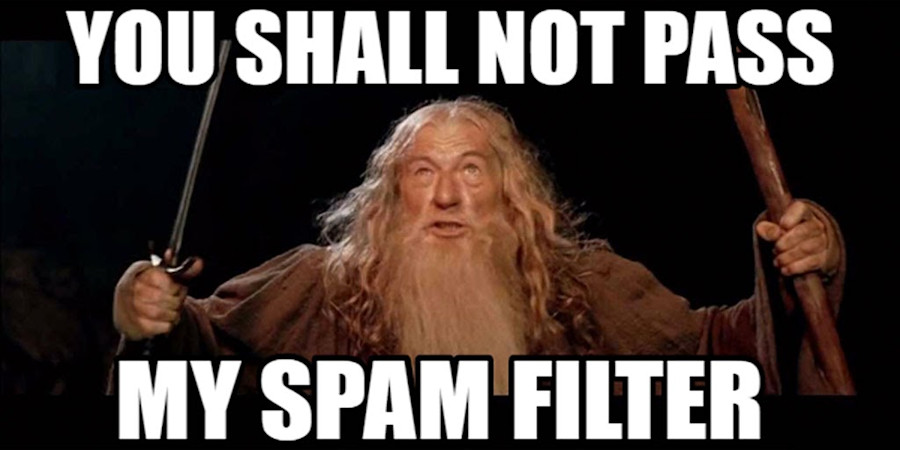Honestly — most follow-up emails are painfully.dull.
When I see "Hey, just touching base" or "Just checking in," I know that someone put minimal effort into the email, and usually, I reciprocate by swiping left.
You’ve put work into finding sales prospects; now, it’s about understanding how to write the best sales follow-up emails.
But what do you say?
How do you remind your prospects that you exist without begging? (Note: begging is only a good look for dogs.)

Let’s talk about action items. Here are five follow-up sales email techniques to master, plus an infographic with alternatives to the ever so lame “just checking in” verbiage.
Don’t have time to read the full post? Memorize the cliff notes below.
Start with highly qualified leads.
Be genuinely friendly – always.
Ask if you should stop contacting them.
Avoid cookie-cutter messaging at all costs.
Build real relationships; be genuine.
Note: There's a reason our software is called "Leadfeeder". Hop on board with our 14-day free trial to see for yourself.
So, what makes a great sales follow-up email?
Successful B2B sales teams focus on building strong, trusting relationships with buyers before they even think about pitching. Your prospects will only consider closing a deal with you after knowing that their success is your priority.
When consumers regularly receive useful content and insights from you, they naturally develop trust and move further down the funnel.

Lead nurturing hinges on a sales rep’s ability to keep the conversation going, just like Greg. You need to maintain this flow of mutual sharing without pestering anyone to the point of turning them off.
So how do you accomplish that?
How to write a follow-up email
Engage leads in a transparent, personal, and helpful manner. It will strengthen the relationship, build brand equity, keep you top-of-mind, and advance the buyer through the sales funnel.
When trying to close a sale, the last thing you want to do is leave a bad taste in your customer’s mouth by sending tons of vanilla follow-up emails — be creative.
30 tips for a winning sales follow-up email
We created this handy guide with 24 occasions for follow-up emails — this is a great one to share with your team.

Here are more sales techniques for writing follow-up messages that get opened.
1. Start with better-qualified leads
Before you send out cold emails (or cold calling), make sure the people you are contacting are interested in what you have to offer.
Start by using an AI-driven sales prospecting tool like Leadfeeder to find qualified leads. Unlike many Leadfeeder competitors, our tool not only finds more sales leads — but also helps you connect with the best person at each company. Leadfeeder gives you a leg up.

Then, take the time to research each prospect before starting the sales outreach process and personalize your outreach email.
If you need help nailing the first contact, this video provides some solid tips:
Here's the deal — follow-up emails are more manageable when you reach the right audience and make a good impression from the start.
2. Be genuine – always
It’s usually pretty easy to read the tone in someone's emails and social media posts. So be careful with your phrasing and the attitude you might unintentionally give off.
Disingenuity will put you on the fast track to losing the customers — and earning yourself a less than stellar rep.
The last thing you want to do when following up with a potential customer is to use wording that could come across as frustrated/annoyed/angry. Consider that a cardinal rule.
Another one: prospects don't owe you anything, and they’re likely as busy as you are.
Structure your emails in a way that illustrates just how naturally patient/chill/calm as a cucumber you are (pro tip: take a deep breath before making contact with the keyboard).
Show you understand they’re busy, and you’re there for them whenever they need you. Prospects will feel more comfortable reaching out on their terms.
Use confident language. Never say "I'm just..." — “just” should only be used in the context of the time (ex: "I just left you a message."). Also, steer clear of filler phrases like, "I wanted to reach out..." You don't want to reach out; you are reaching out. Show confidence in your emails by saying, "I’m reaching out for XYZ." Be clear and direct.
Like making a new friend, you want to start on the right foot. Prevent a misunderstanding by spending time on a well-crafted email.
3. Ask if you should stop
I get that this might sound awkward, but it does work.
We’ve all grown accustomed to receiving promotional and impersonal messages, and to be honest, it sucks.
Your prospects will appreciate you asking if they want out of the convo.
They could want you to email them less or stop contacting them altogether. Or perhaps you’re not talking to the right person. Ask them to find out.
"Hey, I haven't heard back from you in a bit. Are you still interested? I don't want to keep sending messages if [your product or service] isn't up your alley."
Avoid messages like, “Since you haven’t got back to me in a month, I’ll assume you’re not interested.” Instead, be relaxed and patient, and allow them to feel comfortable responding truthfully.
4. Avoid cookie-cutter messaging
Too many reps try to take the easy route by sending the same boring, unoriginal, cold-call follow-up emails that immediately get flagged as “spam.” Creativity sets you (and your future emails) up for failure on so many levels.

Lead generation and sales prospecting require different approaches, so don't use the same techniques in prospecting as you do for generating leads.
When it comes to sales and marketing, attention is currency. If you can keep their attention, you have a better chance of getting a response and making the sale --- which is why every message should have some personalization, even if it's just one line.
Research each person you connect with to learn who they are and understand how you can help them personally. Deep personalization always yields significantly higher response rates.
Say a potential customer tweets a lot about The Mandalorian. Ask if they’ve watched the latest episode, what they thought of a specific character arc. If you’re feeling ambitious, send them a Baby Yoda t-shirt in the mail.
Reasonably easy prep-work can go a long way in building a business relationship.
5. It’s all about relationships
Ultimately, being in constant communication with your leads and customers shouldn’t be something you dread. If you’re genuine and helpful, they are likely to be the same in return.
People want to feel comfortable with their business contacts. If you approach prospects transparently and kindly, you won’t have a one-time customer — you’ll have a customer for the foreseeable future.
6. Don't lie — not even a white one
Even little lies like "I am reaching out to see if you had any questions..." can degrade trust. You may feel like you're softening up your email, but fibs undermine any CTAs you'll add later on.
Moral of the story?
Start with highly qualified leads.
Be genuinely friendly – always.
Ask if you should stop contacting them.
Avoid cookie-cutter messaging at all costs.
Build real relationships; be genuine.
Note: Grab new prospects to test out your email skills. Use Leadfeeder's 14-day free trial for warm leads.
Now that you're here
Leadfeeder is a tool that shows you companies that visit your website. Leadfeeder generates new leads, offers insight on your customers and can help you increase your marketing ROI.
If you liked this blog post, you'll probably love Leadfeeder, too.
Sign up







